This post may contain affiliate links. Please read my privacy policy.
Nyonya Chicken and Potato Stew, or Ayam Pongteh, is a delicious dish from Malacca’s Nyonya cuisine. It’s made with chicken, potatoes, taucheo (fermented soybean paste), gula melaka (palm sugar), and spices. This authentic Peranakan recipe has been passed down through generations and is perfect for a hearty, flavorful meal!
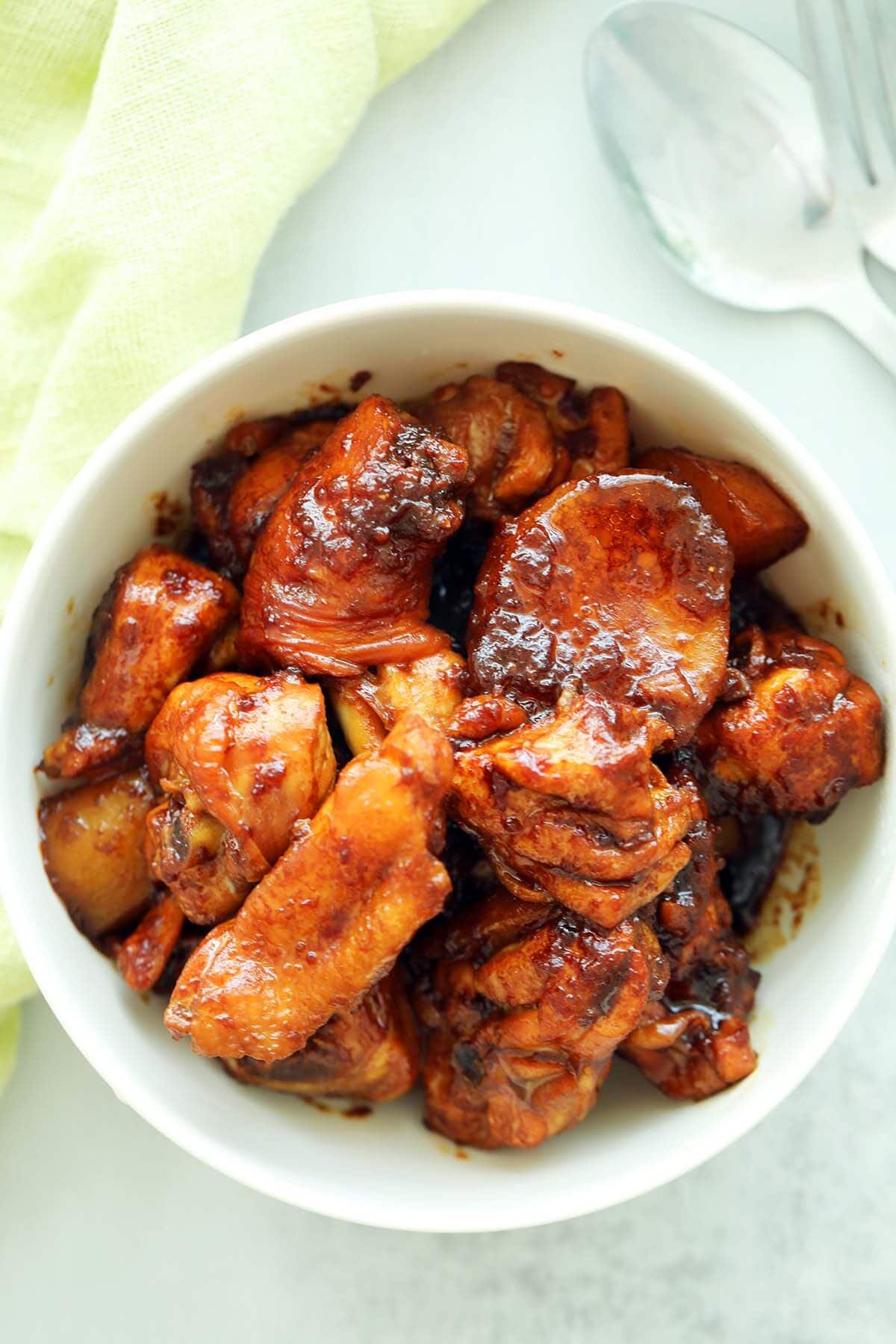
Ayam Pongteh
Ayam Pongteh is a beloved dish in Peranakan cooking, especially in Malacca (Melaka in Bahasa Malaysia). This traditional Nyonya chicken and potato stew is a great mix of Chinese and Malay flavors, reflecting Malaysia’s cultural diversity.
It’s made with tender chicken, chunky potatoes, and a sauce that blends fermented soybean paste with spices. Ayam Pongteh isn’t just a meal—it’s a taste of the cultural mash-up that makes Malaysian food so unique. Like other Malaccan Baba-Nyonya favorites, such as cincaluk omelet (telur dadar cincaluk) and Onde-onde (Ondeh-ondeh), Ayam Pongteh has been enjoyed for generations, keeping Peranakan food traditions alive.
Chicken And Potato Stew
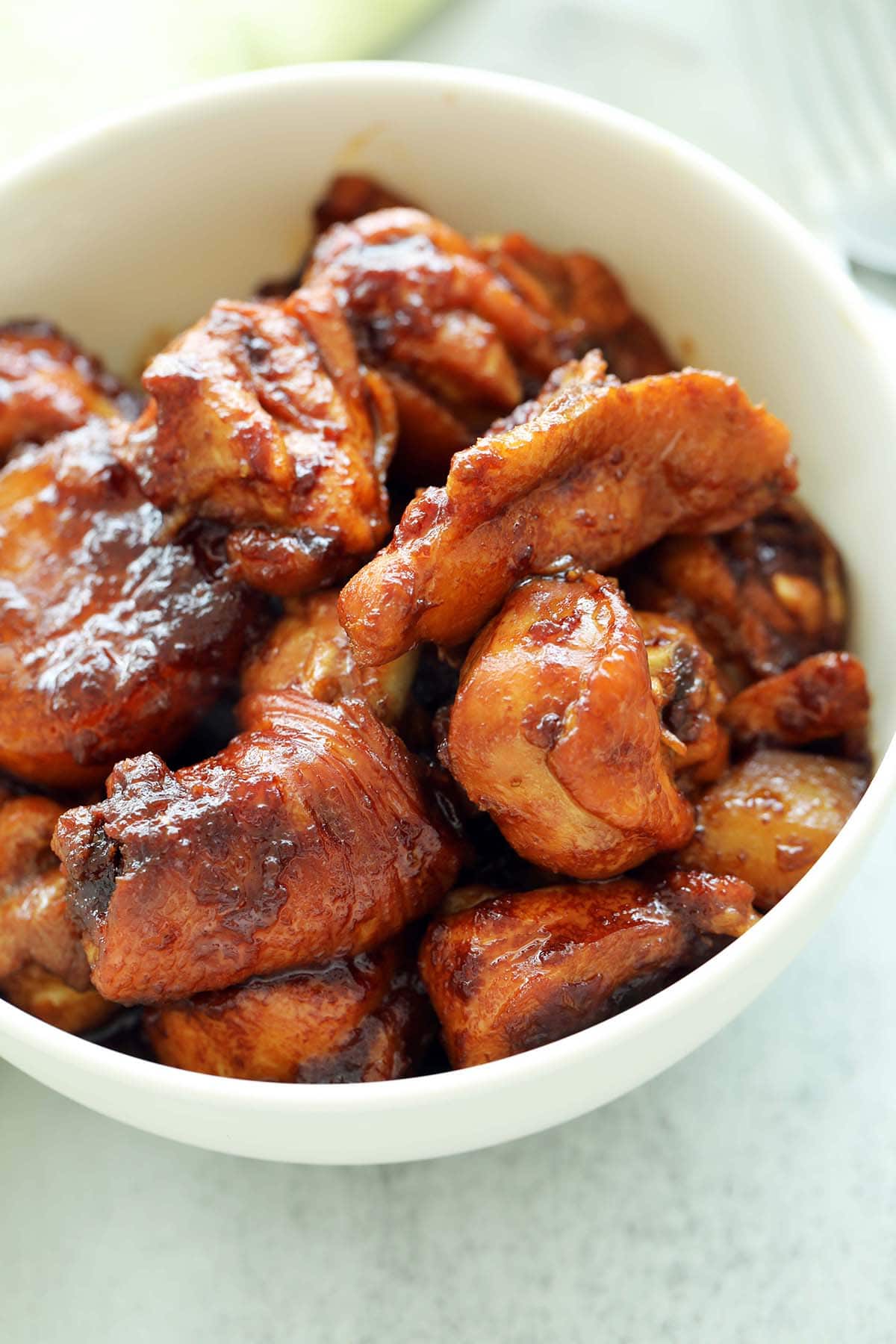
Made with chicken, potatoes, and flavored with taucheo (fermented soybean paste) and gula melaka (palm sugar), ayam pongteh is a comforting and delicious dish that brings warmth and joy with every bite.
This Nyonya chicken and potato stew is more than just tasty—it’s a symbol of family and culture. Each family has its own version of the recipe, making it special and unique. When it’s cooking, the amazing smell fills the house, bringing everyone together. Whether for celebrations or everyday dinners, ayam pongteh makes mealtime feel extra special, creating happy memories and bringing people closer.
Be sure to check out my tips below to make this dish turn out perfect every time!
Ingredients You’ll Need
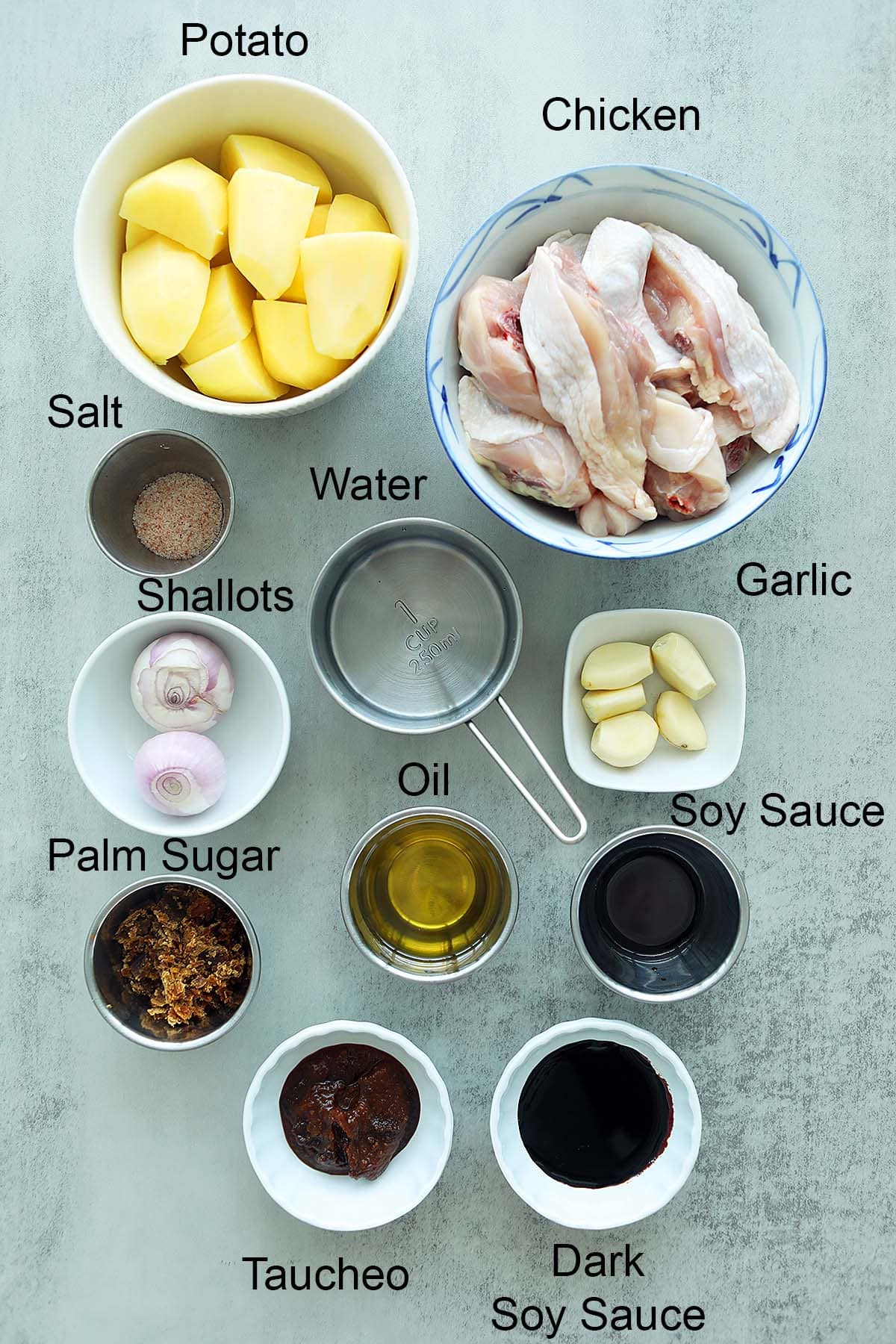
Pongteh ingredients typically include chicken, potatoes, taucheo (fermented soybean sauce), gula Melaka (palm sugar), and a blend of aromatics such as shallots and garlic.
- Potato – it’s best to use waxy potatoes like red potatoes or new potatoes as they hold their shape well during cooking and don’t turn mushy.
- Chicken – use whole chicken and cut into pieces, or you may use chicken leg quarters for tender chicken meat.
- Shallots and garlic – shallots and garlic are commonly used in Ayam Pongteh to add depth of flavor and aroma to the dish. They are typically sautéed until fragrant before adding other ingredients, contributing to the rich and savory taste of the stew.
- Palm sugar – palm sugar, also known as gula Melaka or gula Jawa, is a key ingredient in Ayam Pongteh. It adds a subtle sweetness and depth of flavor to the dish, balancing out the savory and umami notes.
- Taucheo – Taucheo is sometimes labeled as fermented soybean paste or soybean sauce. It is a fundamental ingredient in Ayam Pongteh. It adds a rich, savory flavor and depth to the dish.
Please refer to the recipe card at the bottom of this post for full details on each ingredient.
How To Make Ayam Pongteh
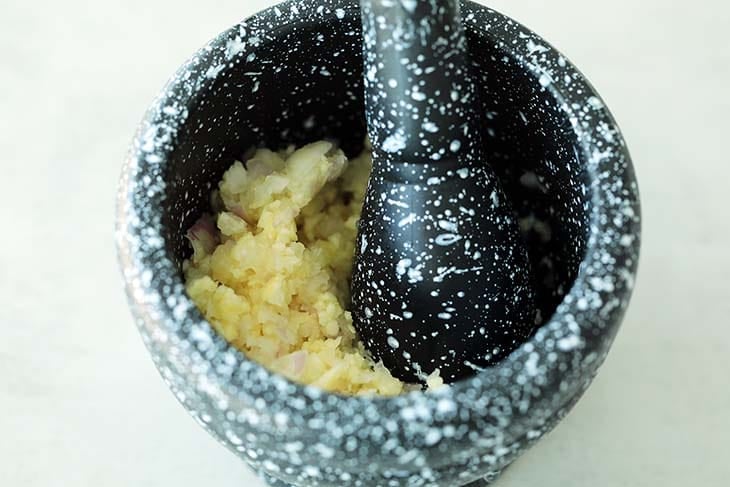
Take your mortar and pestle and smash up the shallots and garlic into a coarse paste. If you don’t have one, a food processor works too! Just set it aside when you’re done.
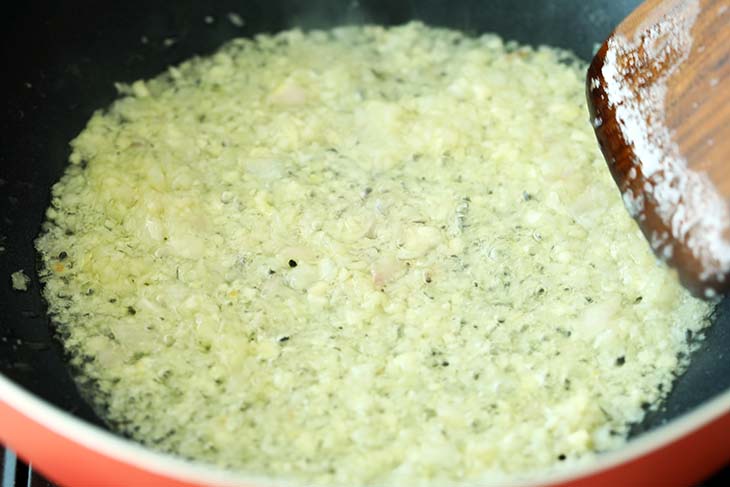
Heat up some oil over medium heat, then toss in that shallot and garlic paste. Fry it for about 2 minutes, but keep an eye on it so it doesn’t burn. You want it nice and fragrant!
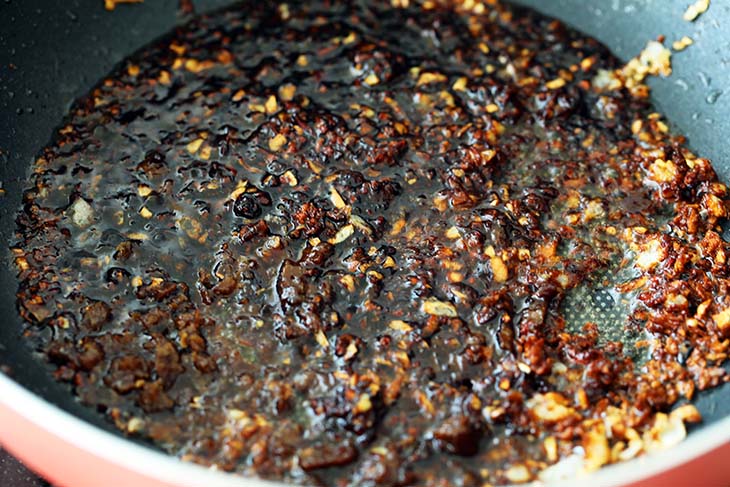
Now, add in the taucheo, dark soy sauce, and palm sugar. Give it a good stir until the palm sugar melts and the sauce thickens up a bit—this should only take about 30 seconds.
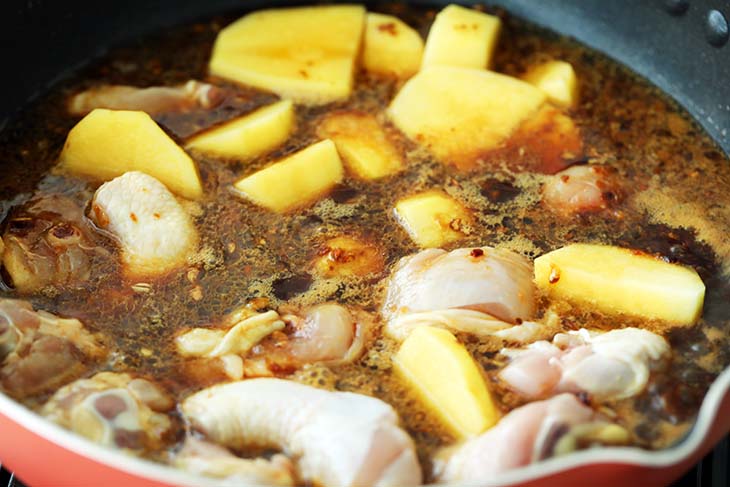
Toss in the chicken and potatoes, then pour in the water. Bring everything to a boil and let it do its thing!

Once it starts boiling, lower the heat and let it simmer for about 30 minutes. Stir it occasionally, and you’ll know it’s ready when the chicken is nice and tender.
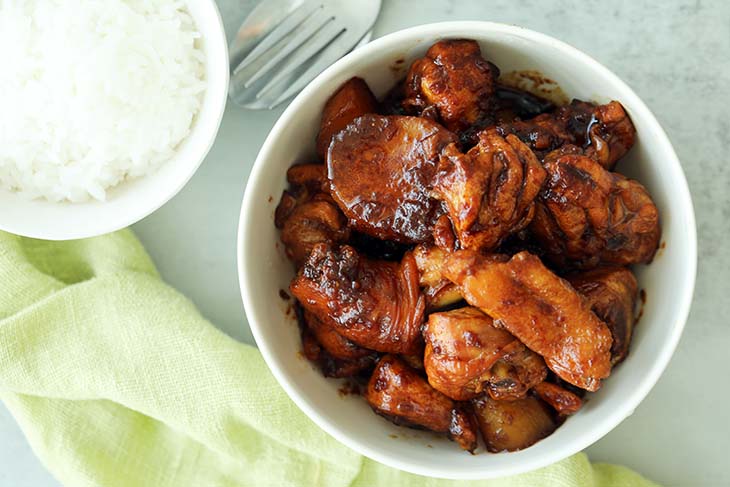
Taste it and season with soy sauce and salt to your liking. Serve it up hot with some steamed rice, and you’re all set!
Pro Tips For Perfect Ayam Pongteh
To cook like a baba or Nyonya, make sure you follow my pro tips below:
- Shallots and garlic. Take your time to sauté them in oil until they turn golden brown. This really brings out their sweetness and boosts the aroma of the dish.
- Taucheo. Go for a high-quality brand for the best results. It shouldn’t be too salty, and the fermented soybeans should have a nice golden to light brown color. Avoid anything too dark in color.
- Potatoes. New potatoes or red potatoes hold up better than Russets. Peel and cut them into large chunks. If you want a creamier texture, Yukon Gold works great!
Frequently Asked Questions
Yes, it is! Ayam Pongteh is a Malaysian dish because it originated from the Peranakan culture, which began in Malacca and has deep roots in Malaysia. It has been enjoyed as part of Malaysian culinary tradition for generations, featuring ingredients and flavors commonly found in Malaysian cuisine. Even though it’s available in Singapore, Ayam Pongteh is a strictly Malaysian recipe.
Nope, you can’t. Salted black beans aren’t the same as the fermented soybeans used in taucheo. Taucheo comes from fermented soybeans, so using salted black beans won’t give you the same flavor or texture.
For this recipe, go for salted fermented bean paste (taucheo).
No, molasses isn’t a good substitute for dark soy sauce. Molasses is sweeter and thicker, while dark soy sauce brings that savory, umami depth to the dish. Stick with dark soy sauce for the best flavor!
No worries! You can use brown sugar as a substitute for palm sugar. Just adjust to taste, and you’ll still get that nice sweetness in the dish!
Yes, you can. Babi Pongteh is a dish similar to Ayam Pongteh, but instead of chicken, it uses pork as the main ingredient, and pork belly is a popular choice.
Yes, you can! Just let the dish cool completely, store it in an airtight container, and freeze for up to 2 months. When you’re ready to enjoy it, thaw it in the fridge overnight and reheat on the stove, adding a splash of water if needed to loosen the sauce.
This recipe is only 526 calories per serving.
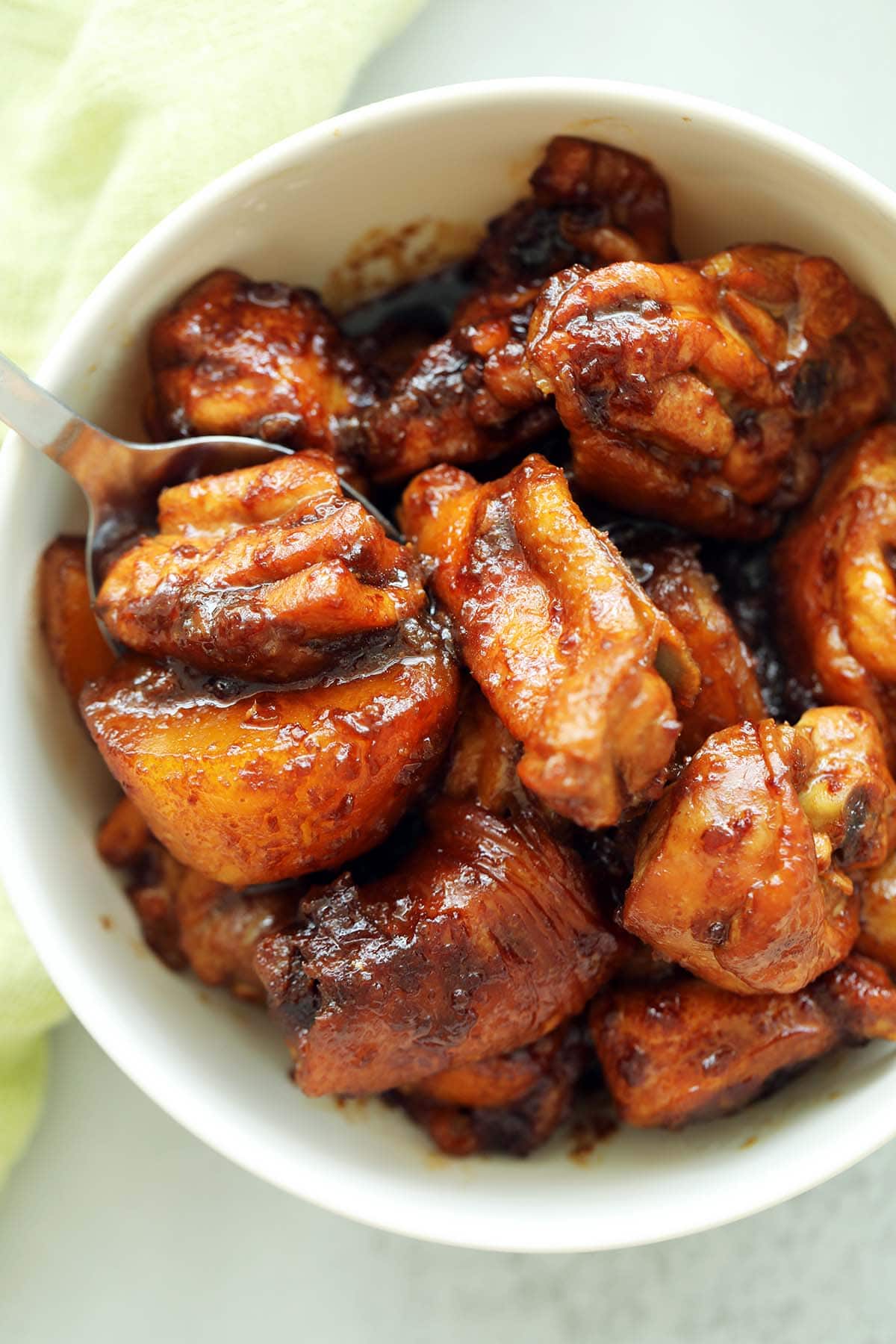
What To Serve With Pongteh
Pongteh is often served with complementary dishes to create a balanced meal. Here are some common options for a complete Peranakan or Nyonya meal:
I hope you enjoy this post as much as I do. If you try my recipe, please leave a comment and consider giving it a 5-star rating. For more easy and delicious recipes, explore my Recipe Index, and stay updated by subscribing to my newsletter and following me on Facebook, Pinterest, and Instagram for new updates.
Other Malaysian Recipes You Might Like
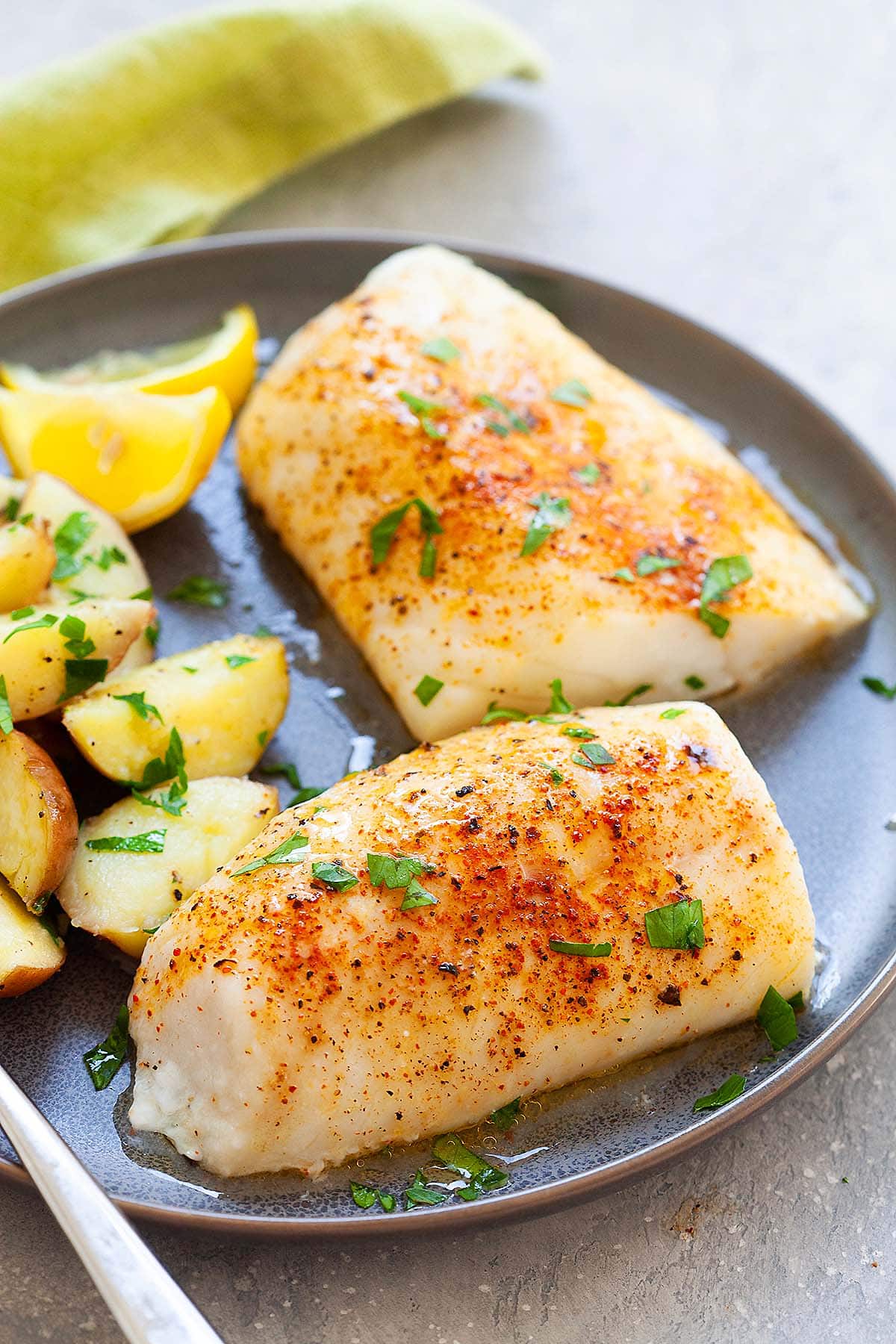
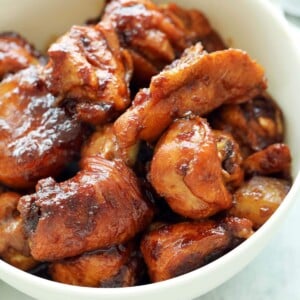
Nyonya Chicken and Potato Stew (Ayam Pongteh)
Ingredients
- 2 shallots, peeled and roughly chopped
- 5 cloves garlic, peeled and roughly chopped
- ¼ cup oil
- ¼ cup taucheo, fermented bean sauce
- 1 tablespoon dark soy sauce
- 2 tablespoons palm sugar, coarsely chopped into pieces
- 1 pound (500g) chicken, cut into bite-sized pieces, about 18 pieces
- 4 small potatoes, Yukons or Reds will hold better than Russets, peeled and cut into large pieces
- 2 cups water
- 1 tablespoon soy sauce
- salt to taste
Instructions
- In a mortar and pestle, pound shallots and garlic into a coarse paste. You may use a food processor. Set aside.
- Heat oil over medium heat, add shallots and garlic paste and fry for about 2 minutes, making sure not to burn the paste.
- Add taucheo, dark soy sauce, and palm sugar. Stir until palm sugar has dissolved and liquid has thickened, about 30 seconds.
- Add the chicken and potatoes, then pour in the water. Bring to a boil.
- When the water boils, reduce heat and simmer, stirring occasionally, for 30 minutes or until the chicken is tender.
- Season with soy sauce and salt to taste. Serve hot with steamed rice.
Notes
- Shallots and garlic. Take your time to sauté them in oil until they turn golden brown. This really brings out their sweetness and boosts the aroma of the dish.
- Taucheo. Go for a high-quality brand for the best results. It shouldn’t be too salty, and the fermented soybeans should have a nice golden to light brown color. Avoid anything too dark in color.
- Potatoes. New potatoes or red potatoes hold up better than Russets. Peel and cut them into large chunks. If you want a creamier texture, Yukon Gold works great!
Nutrition
Nutrition information is automatically calculated, so should only be used as an approximation.
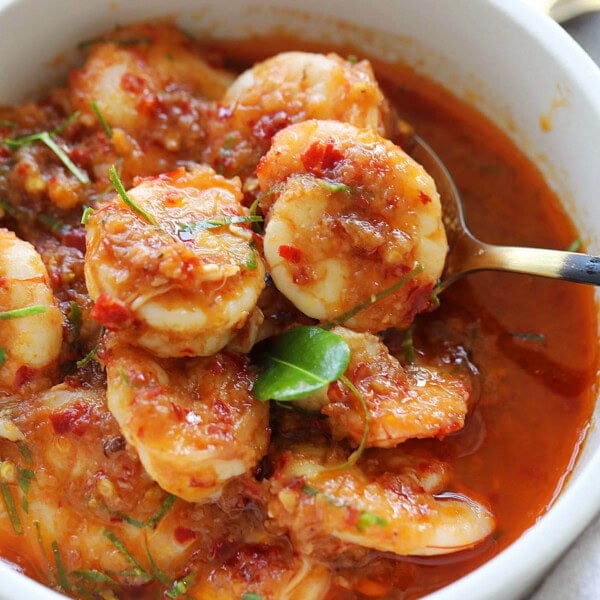
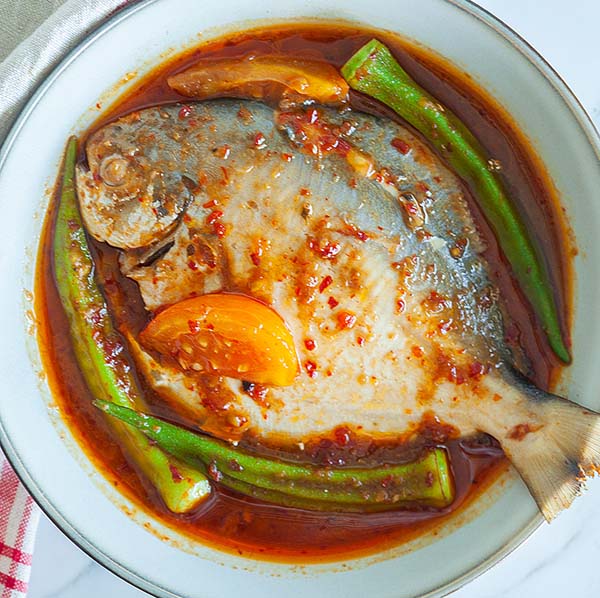
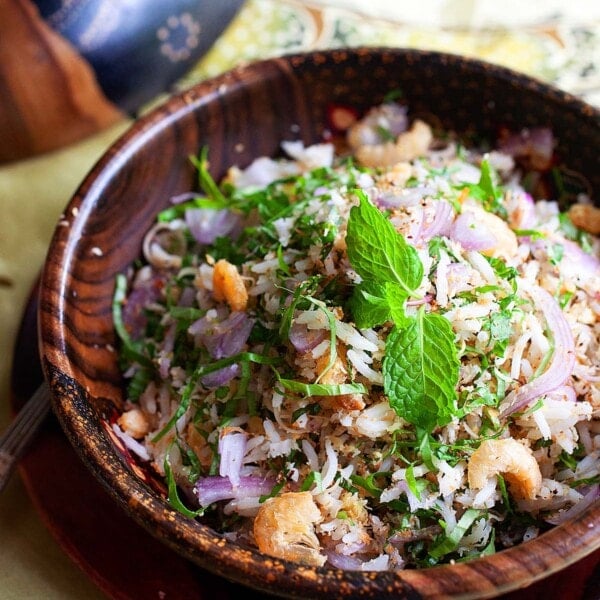
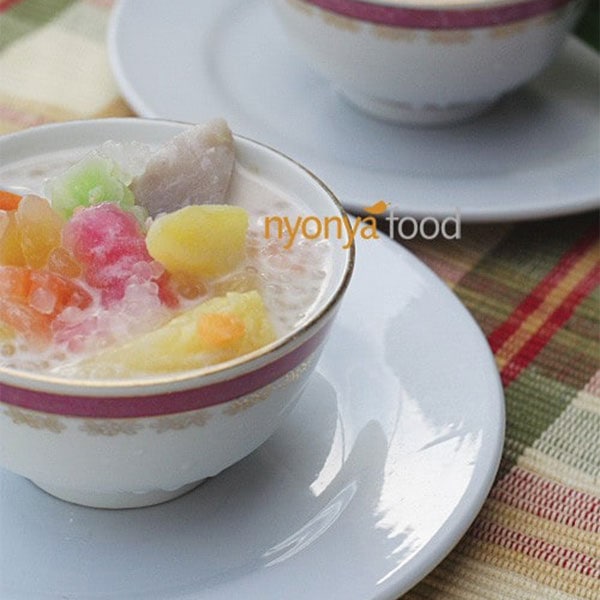






I have a 100g pack of salted black bean soybean. Can I make taucheo from this pack? Btw, your beef redang is sumptuous.
Salted black beans and taucheo are different. Taucheo is yellow soybeans.
I read/heard that molasses may be substituted for dark soy sauce. Is this an acceptable substitution?
Hi Elizabeth, molasses are sweet but dark soy sauce are dark and salty. It’s not a substitute.
How many people is this recipe for?
2-3
Tried it last weekend. No shallots so used onions. No palm sugar so used brown sugar. Put everything in to slow cooker after mixing chicken and potato into cooked sauce. This recipe is so good!!!
Yay Lily thanks for trying this ayam pongteh recipe.
My family love this recipe so much.
Due to time constraint, is it Ok to prepare this dish 2 days in advance and freeze it?
Thank you.
Of course, you can.
Malaysian food is the best.
I agree.
Ur using sweet or salted fermented bean paste? There are 2 types of taucheo here
Salted.
any type of fermented soy is okay…the korean or Japanese miso is good to go… just add sugar to your required taste…
Never heard of Palm sugar. Is there a substitute you can suggest? This dish looks really good and would love to try:)
You can add brown sugar, per your taste.
Is the fermented bean sauce the same as Chinese black bean sauce? If so, I don’t have it where I am, any suggestions? I have Korean fermented bean sauce
Suge, no, it’s not the same. It’s yellow bean paste.